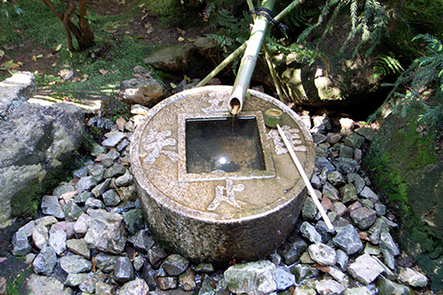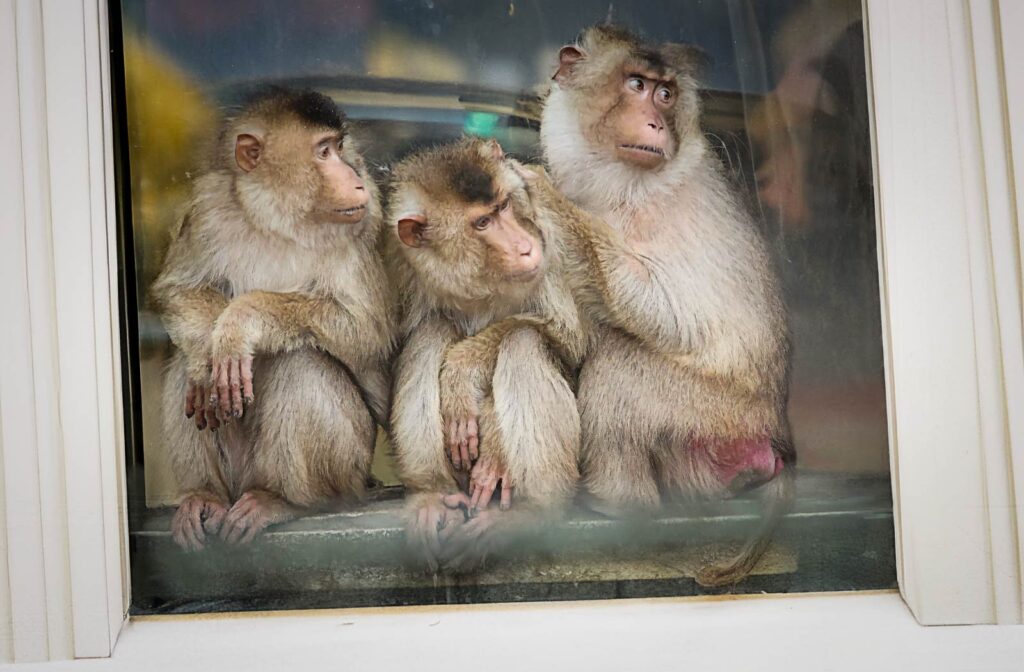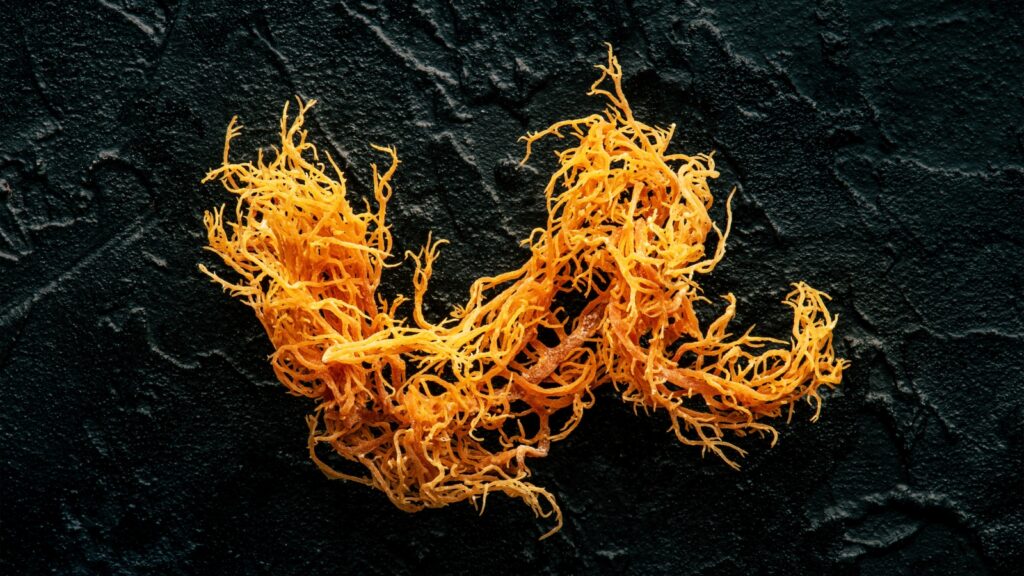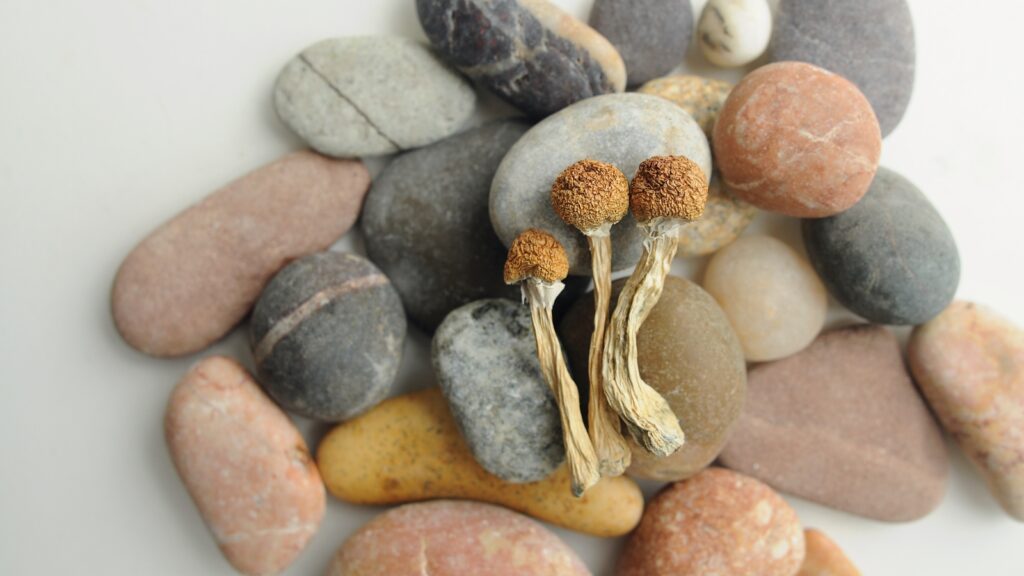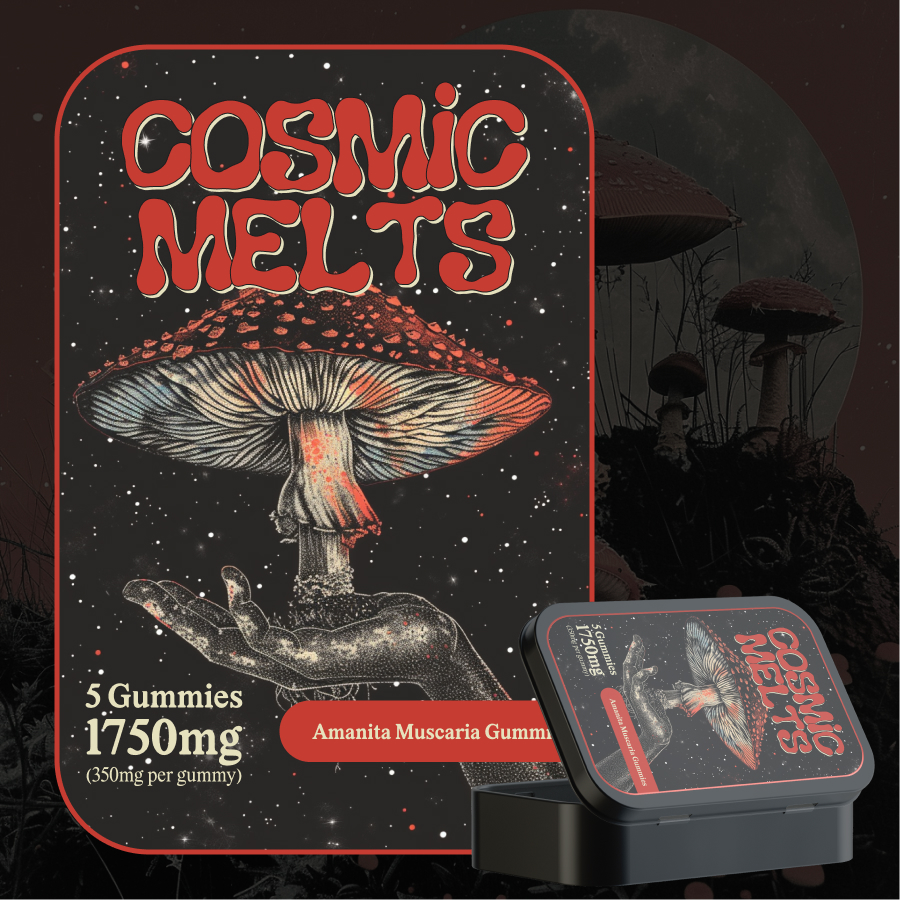The following article originally appeared in American Buddhism as a Way of Life, recently published by SUNY Press.
Allen Ginsberg lay in a coma, dying. An oxygen tube laced across his nose as he tossed and turned against his portable hospital bed. Sitting beside him that early April night, I held his cool, surprisingly delicate hand and meditated with him despite his coma. I breathed in, and he breathed in then breathed out. Both of us became one breath of bare attention. Suddenly, as if distracted by a thought, he tossed and turned, like a balloon trying to break its tether. His bed in his East Village apartment was placed to face the traffic below. Buses swooshed by, horns blasted, and the soft tching tching of delivery boys’ bicycle bells clanged as they wove their way through traffic. Friends, relatives, and former lovers — some famous, some not — came and went. Off to one side of the room sat Gelek Rinpoche, a Tibetan lama, with three other monks performing pujas and prayers. I served them tea, then sat down among them to practice.
Two hours later Allen was dead of a massive heart attack.
It seemed as if a linchpin of the universe had been removed, and the firmament shifted. An ancestor, a keeper of the flame of knowledge — at least for me and others of my generation — was extinguished. It wasn’t only Allen who had died. It was also the first wave of those who had discovered and engraved Buddhism into the New York avant garde. John Cage had died a few years previously; William Burroughs, Gregory Corso, Jackson Mac Low, Nam June Paik, and others would soon follow.
As I grieved, I thought about how Allen and I, both agnostic Jews from Eastern Europe, became Buddhists. What forces had shaped our commitment? In my 20’s I was part of, depending how you looked at it, a second wave of Buddhist transmission to America: Allen had been one of the first who went to the East to study with revered Buddhist masters. In New York, I knew increasing numbers of artists developing Buddhist inclinations. In Boston, I had walked into Memorial Church at Harvard University and was engulfed by a Philip Glass’s opera, Einstein on the Beach. The music’s repetitive, pounding, varied tempo was a representation of exactly what I had experienced during meditation retreats. I found this same sensibility in the work of other artists, in readings by the poets Anne Waldman and Patti Smith, and at John Cage concerts at the Museum of Modern Art. But to most people in the art world, Buddhism was just a buzz word. I interviewed many people in the New York creative world and practically all roads, without exception, led back to the Japanese scholar, Dr. D.T. Suzuki. Everyone, it seemed, had read him, especially in the l940s and 1950s, before ordained Buddhist teachers were readily available in the West.
Zen Buddhism, admittedly, is not my specialty, for my real training is in South East Asian Vipassana and Tibetan tantric meditation, which I have pursued for the past 35 years. During my research, the more I read Dr. Suzuki’s work, the more I wanted to know about Suzuki the man. Who was this unassuming person who had, as far as I could tell, helped change the direction of American culture? I found myself especially surprised by the controversy over Suzuki’s activities in Japan during World War II. Seeking to discredit him, some critics accused him of imperialistic, militaristic sympathies. Why was this man, who had opened the door for so many others, having the door shut on him? I wasn’t a Suzuki scholar, nor do I speak Japanese; yet I wanted to investigate the claims against Suzuki. It was true Suzuki’s teacher, Shaken Soyu, had a militarist, nationalistic perspective, consistent with what critics refer to as “Nihonist.” But Soyu lived on the cusp of the 20th Century, the early stage of relations between America and Japan. What else could he have done? America thought it was superior to the Japan, but Japanese thought they were better than Americans. The Japanese thought Westerners smelled bad because they didn’t bathe, while Westerners thought the Japanese had bizarre customs and rituals. Did that make the either Japanese Nihonists or the Americans chauvinists?
To help answer my questions, I located Dr. Taira Kemmyo Sato of the Three Wheels Organization in the U.K., who studied with Dr. Suzuki until the day he collapsed and died of an intestinal obstruction at age 96 in Japan. He suggested I get in touch with Mihoko Okamura, Dr. Suzuki’s secretary for the last fifteen years of his life, now living in Kyoto, Japan. He would make the necessary introductions. I was thrilled but scared. First I wrote her, then I called. She picked up the phone, answering in clear, precise English, since she had been raised in California and New York. After I hung up the phone I was profoundly affected by the story she had told me of how she had been in her pajamas, sick with a cold, listening through the wall next door when Allen, Jack Kerouac, and Peter Orlovsky first met Dr. Suzuki in the early fall of 1957, on the eve of Jack’s publication of On the Road. I had already read two accounts of that meeting, one from Suzuki and one from Kerouac. Suzuki had noted, “The ‘Beat generation’ is not a mere passing phenomenon to be lightly put aside as insignificant. I am inclined to think it is somehow prognostic of something coming, at least, to American life.”1 I now felt speaking to her was like receiving a baton of live human contact, passing from generation to generation. What else could lineage possibly be?
I flew to Kyoto to visit her, feeling I was reaching back to the time in New York when Suzuki taught at Columbia University. I stayed in a small guest house right next to Daitokuji Temple, an important Rinzai Temple in Japan. Waking up on my futon in a three-tatami-mat sized room, I went downstairs and made arrangements to meet Mihoko the next day, then took a bus downtown to see the sights. Especially memorable was a small, local temple. It was about noon, and I wandered amongst the beautifully pruned gardens, trees, chirping birds, and stone walkways. I entered a peaceful, well tended grave yard. Rows of neat, narrow stone columns were flanked by thin wooden strips of calligraphic inscriptions that made softly clacking sounds, shimmying with the breeze. Some, weathered with age, had turned from bamboo tan to soft slate grey. Ancestors: I thought, I have stumbled into a site of ancestors. An official plaque stated that the temple was Choko-do, an Amitabha Buddha temple dating from the 12th century. Many of the 1,800 temples in Kyoto had placed small English language plaques on their outside walls, explaining a particular site’s historical importance.
Next, I saw priests wearing long, fluttering, translucent white robes draped over aqua-and-turquoise under–robes standing on either side of the gates. Atop their heads were tall, peaked, intricately woven, black rattan hats. Holding fans, they smiled, nodded, and indicated I should enter. They walked with me over to a spigot. One priest dunked a small bamboo ladle into the water to rinse my mouth with and pointed at the receptacle where I should spit it out. Strange, discordant music sounded. The priests bowed to one another, and gestured for me to follow, and we entered an open room hung with white and red brocades. Two flute players and two drummers were playing odd sounding music, as the elder priest unfolded a calligraphic scroll chanting in a clipped, singsong way. There was only one other person present, an old man who appeared to be the sponsor of the ceremony. The younger priest leaned over a pewter urn incised with calligraphic inscriptions, while the older priest held a staff of long squiggly strips of white paper, waving it around. Everyone bowed. The music continued and the younger priest walked into an intricately arranged inner chamber, his head but not his torso hidden from view. Platters of perfectly arranged food were carried into the inner chamber by the older priest and the sponsor. A fresh green sprig with white paper woven into a zig-zag pattern was waved around as both priests clapped and bowed. The pewter bowl was uncovered, a miniature ladle dipped in, and its contents poured into small, white, ceramic saucers from which everyone drank. The monks motioned that I, too, should drink the water. The food was carefully carried from inside the inner chamber to an outside shrine, and the ceremony was over, the monks lining up and bowing to me as I left. We had not spoken one word to each other during the entire event. Stepping outside, I read the temple’s plaque: It was the Ichihime Jinja Shinto Shrine of the Five Goddesses. The shrine’s water was traditionally used in the first bathing ceremony for the Imperial new-born infant. The last line stated: “Its miraculous virtue is especially renowned for protecting women from evil.” In less than 24 hours in Japan, I had made contact with ancestoral spirits, been ritually cleansed in a Shinto ceremony, and protected from evil. I was now prepared to meet Mihoko, a living representative to me of Dr. Suzuki.
She had luminous, dark, indigo blue hair, as some older people in Japan do dye their hair fuchsia pink or lime green, a flip on Western ideas of punk. Now in her 70’s, forceful and forthright, she shook my hand as we stood on the wooden steps by the carp pond in front of my tiny guesthouse, saying “hello” in her elegant, clearly enunciated English. “My husband is waiting in his car; I am taking you around today,” she announced, and we drove to Ryoanji Temple. Using a professional video camera, I put on my headphones on and started shooting the moment we stepped into the compound of the famously enigmatic Ryoanji Garden. She mentioned she was working on a photo book of remembrances of Dr. Suzuki and had recently opened the contents of cartons of boxes she had been saving for 40 years.
As she briskly walked down the path in Ryoanji Garden, she said, “The worst and the best thing about the human being is they have intellect. And the intellect divides the subject from the object. What Buddhism is insistent about is that reality can take place only when the subject and object are whole.” We walked into the famed raked stone “dry” garden, along with a cluster of Japanese school children furiously snapping pictures of each another. Everyone, she informed me, had their own interpretation of the garden’s 15 rocks in the Ryoanji Garden. She said each piece was individual, but also held the universal. I asked about her personal history and she said grew up California, but during World War II, when she was nine years old, her family was sent to the Japanese interment camps in the desert. She did not linger on that memory but asked me, “What is it now for the person? Now is the most important moment, because it is now from where you measure your past and future. When you have that now, even in death it is not a problem.” Mihoko turned to me as I gazed at those immortal 15 rocks. “The purpose is to answer the question of who you are. Those stones and the sand and the way it has been composed, it is both the question and the answer.”
We continued walking around the garden. Her father, Frank Okamura, had been a gardener at the Brooklyn Botanic Gardens as well as a Bonsai master, so she was well qualified to discuss the moss on the rocks and the exceptionally well pruned trees. As the bamboo leaves rustled in the summer breeze, she pointed out the renowned square water basin with the inscription “I learn only to be contented.” I then asked her about the recent attacks on Dr. Suzuki. She drew her shoulders together, shrugged, and replied, “Young academics, the new generation, they always have an axe to grind. They will pick up anything that will support that axe. They are not looking at what went before or what went after the statements, because statements are their commodity. They see a string of words which will support their viewpoint and they pick it up without any strings attached, and I think that is a crime, really.”
I replied, “I read somewhere that if you did not support the wartime effort in Japan you were either surveilled or jailed.”
“Look,” she said, “there are all kinds of Japanese, and there are all kinds of Germans, and you can’t really package them together. It so happens that Suzuki was an anti-militarist, period. And people are not going to see that about him if they see that a few Zen priests were pro-militarist. They don’t realize his wife was American, and forget his long history of being in America. They don’t realize he kept saying, with the risk of being arrested, that Japan should not have gone to war with America. War is a materialistic thing and you cannot beat American materialism.” We left the rock garden and wandered amongst the blooming lotus flower ponds. A caretaker gently raked the surrounding grass with a plain bamboo rake, a timeless and simple gesture. Mihoko said in her no-nonsense way, “There were pro-militarists among the Buddhists, no doubt about that. It was in the air. If you find an impure air, you have to breathe it sometimes, you see? But that does not mean that everything is contaminated.”
“Maybe it was the fear of imprisonment?” I asked.
“If you are brainwashed, and that is what they do in such times, you are brainwashed by the entire society. I am sure a lot of Germans were brainwashed. What do you do under such circumstances? Dr. Suzuki was not brainwashed. It’s quite simple. The militarists came in and told all the university students, ‘You must go to war and die for your country.’ Dr. Suzuki got up and said, ‘No, you come back alive; because without you Japan will not have a future.’ He was able to say that with the militarists right there, and if they dared to arrest him they could have done that. His position was such that they did not arrest him. That doesn’t mean he was pro-militarist. And I know from my own experience of having been with him for 15 years that he never had any thoughts in that direction.”
I countered, “But some people also felt that he thought his country’s culture was superior to others.”
She stared directly at the camera, as if she was trying to tell the world something through its lens. “He never forced anyone to think in his way. He was not a proselytizer in any sense of the word, and in fact he criticized proselytizers of other cultures. He just said what he thought. Words are words and they can be twisted in any which way.”
Back at the car her patient and attentive husband of many years was waiting. We were, I was informed, going to a small restaurant on the grounds of Daitokuji for lunch. She casually mentioned she had tutored the head Roshi in English, and I understood what a profound honor that was, and realized just how gracious she was to take me to lunch in this refined and hidden spot. We walked into a small, traditional style restaurant with low black tables on tatami mats rimmed by shoji screens and painted panels. I set my camera up on a tripod directly across from her. The kimonoed waitresses tiptoed behind the screens and brought us scores of small lacquered bowls, each with one or two morsels of food. Mihoko instructed me on how to drink my tea. She said I should hold it once, and then turn it two times so the correct side of the cup faced the person sitting opposite me.
“So that is the way a proper person has their tea,” I stated.
“Well, ceremonial tea,” she answered. “Wipe the place where you soiled the cup with your mouth, and then turn the cup the other way. Now you are finished.”
As we toasted one another with little crystal glasses of fragrant plum wine, I said,
“All the descriptions I read describe you as being in your late teens or early twenties and being confused and despondent until you met Dr. Suzuki.”
“I was despondent,” she agreed, nodding her head, “in the sense I didn’t find the world important enough to live in. A lot of teenagers have the same feeling. I think that is how we grow up. But I was insistent on having an answer to all of this, and I found somebody who could do that for me. He said, you are here Mihoko-san, you are fifteen now and you are just knowing what it means to learn. In other words — asking questions is the first step you take, asking good questions so that you will know when the answer is there. Without asking questions there is no answer. So in Zen that is the most important. The first step in Zen is to doubt. Have a good doubt.”
“So you had an existential crisis?”
“Exactly. What am I doing here? What is it all about? Who are you? That kind of thing.”
The waitress brought out more bowls of delicately sliced, artfully arranged dishes. I tried something she said was the outer skin of tofu, soaked in marinade. “It was extraordinary experience,” I said, opening the skin, “that Buddhism came to the West during the twentieth century. It will never happen again, it cannot be repeated.”
“Not exactly the same, but the same quality, because enlightenment is enlightenment,” she responded. “The form may change, but the inner quality doesn’t have to change.”
“Because the nature of mind is changeless,” I countered.
“That’s right, “she said eating the rice with her chopsticks, holding the black lacquered bowl close to her mouth.
“Someone who practices tea ceremony, flower arrangement, archery or kendo or judo or any Noh play or Japanese dancing, any of those things which are considered Japanese culture, these are exercises in emptying your mind of the ego. It is central that you learn to encounter your ego through practice,” she explained. “That is what you do when you practice calligraphy. You can see your ego moving at the tip of the brush, but how to get beyond the ego through practice is the issue. It is like chanting a mantra a thousand times a day, but the first time you chant the mantra and the thousandth time you chant the mantra, there is a different quality because you go through a certain stage of your own consciousness or awareness. The fact that you repeat, repeat, repeat — this is, in Japanese culture, an important thing. It is true, for instance, even in sword play. The first strike you make is not the best strike, so you have to practice striking and non-striking so they are the same dimension. The Buddhist monks brought the discipline that is required of monks to the social level of everyday life for children, housewives, craftsmen, swordsmen, even the Daimyo’s.”
“But when these ideas were introduced by Dr. Suzuki to America in the 1950’s,” I responded, “it was very rare. Almost no one had heard about them.”
“If what you just said is true, Suzuki should not be accused of being an imperialist because he is not saying something very original for the Eastern mind. For the Western mind it is something very original, isn’t it? You just said that. It has nothing to do with nations or particular groups of people. That is why he was not an imperialist. It belongs to human nature, and it was this human nature that is required to be saved. That is all he was saying. And it has nothing to do with imperialism. Why is he being called an imperialist? I don’t know; it’s stupid.”
“I meant nationalist, Nihonist,” I said as the waitress brought us shaved slices of a sweet gelatinous dessert.
“Oh, for God’s sake!” she exclaimed. “I must say, there is no culture like the Japanese culture, from what we were discussing. Because if you pick up a flower or try to put it in a vase in a non-effort way, that is Zen or Buddhist, and has nothing to do with nationalism, not at all. The flower speaks, not the nation, not the culture, not the person who put it in there, it is the universe, right there.”
“Why didn’t Dr. Suzuki actively reach out more to the Beat generation?,” I asked.
“Oh, he did, but he didn’t go and sit with them, that’s all. He tried to veer people to do meditation, to be quiet within themselves. That is more proof he wasn’t a nationalist. In human history, in Christian history, for instance, you can be quiet without sitting down in a particular posture, though he did say that is the best posture for being quiet. He felt that the Indians had done quite well in showing that folding your legs up and putting your body in one place and keeping your spinal cord straight was probably the best way for a human being to reach serenity. Yet he did not think that was the only way to arrive at it. It does not matter what language you do it in. He found Traherne, the mystic in England, interesting, and William Blake. He loved Meister Eckhart very much. ‘I wish Eckhart was here, I would like to talk to him,’ he would say sometimes. Being quiet and being able to face everything that goes on inside of you, good, bad, and evil, and then coming to the realization, ahh, this is what it is all about. And maybe sitting is not the way for Western people to arrive at that.”
“I have read,” I told her, “that later in his life, Dr. Suzuki felt very close to Pure Land practice.”
“His mother was a Pure Land person, and when he came back from the United States he did a few requested translations of important Pure Land texts. Then he went to teach at a Pure Land University which is where I am teaching now, Otani University.2 So people think he became involved towards the end of his life, but it is not that at all. The practice tells you to repeat the mantra, and I have a theory about that. It was mainly meant for the average person who was a laborer and had to work with their hands all day long. They could not sit down in an aristocratic way in a Zen temple and do Zazen. They had to make a living from morning until night. The way for such people to meditate is to recite a mantra. That is another way of going through the day with what Dr. Suzuki used to call ‘uniformity of mind,’ without the mind getting excited or angry or upset about something. It brings you sanity.”
And with that our meal ended. Mihoko’s husband had gone back to work, so she called a cab, which quickly arrived. She dropped me off on the pebbly little side road by my guest house, and got out of the car to say goodbye. Standing there, she glanced up at a black and white Japanese crest adorning one of the neat white neighborhood stucco houses. “Amazing,” she said. “That crest up there is my family symbol. I never knew it was here before.”
I turned and focused on the black and white circular design, and saw it was a delicate butterfly. I remembered my dreams after we spoke on the phone in the spring, dreams of butterflies and chrysalises. Now I realized why I had them and what they meant. Ours was not an ordinary meeting, at least not for me; it was a kind of transmission.
I told Mihoko I had dreamt of her family crest before I knew she ever had a family crest and had made drawings of it. I know this touched her. Before I left she gave me her personal fan as a gift. It had calligraphies of humorous animal characters that she said were the first Japanese cartoons. When I arrived back in New York, I placed it on my shrine. And that is when I knew, without a doubt, lineage had come full circle.
Notes
1 D.T. Suzuki. “Zen in the Modern World,” The Japan Quarterly, 5.4 (October-December, 1958), p. 453.
2 Mihoko has since retired from this position.
Image by w00kie, courtesy of Creative Commons license.
